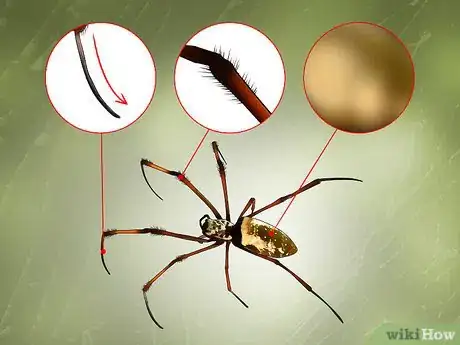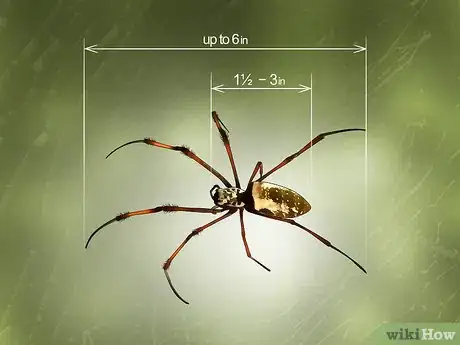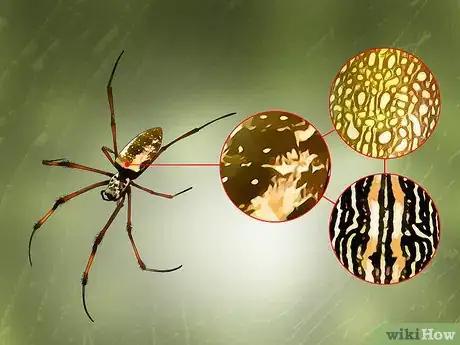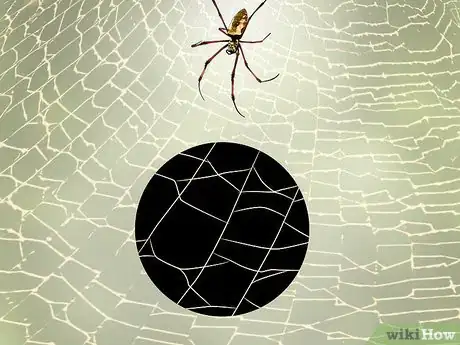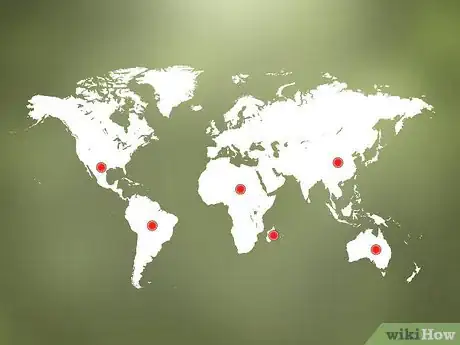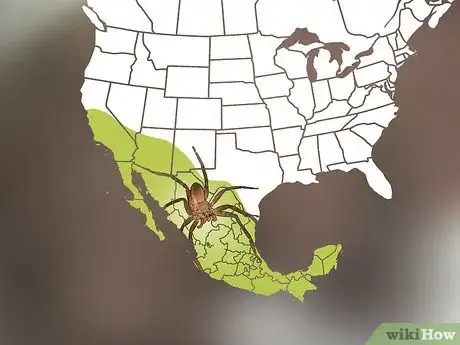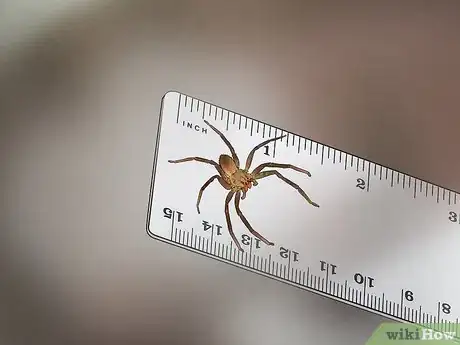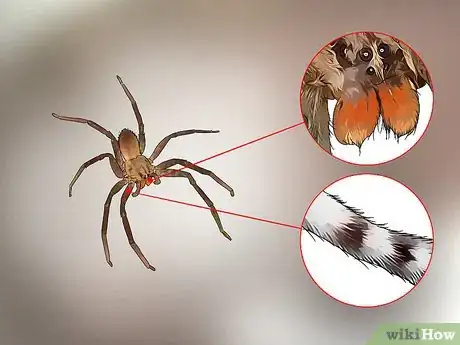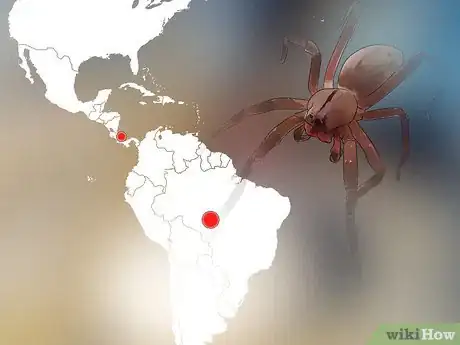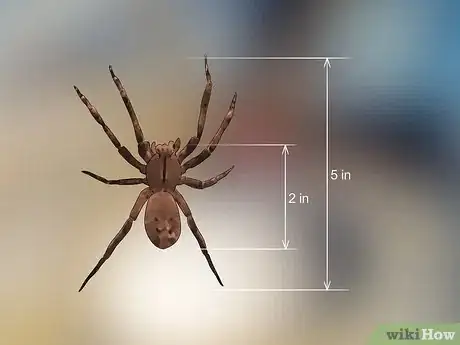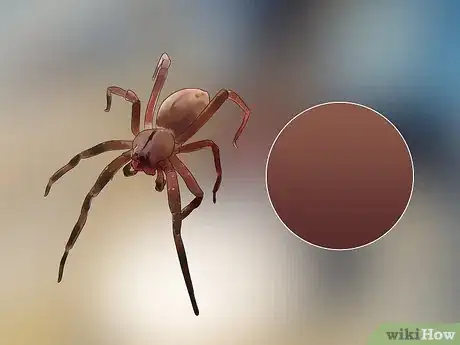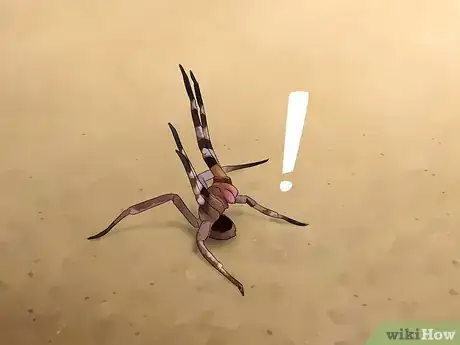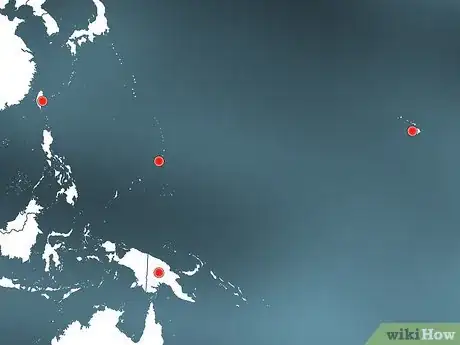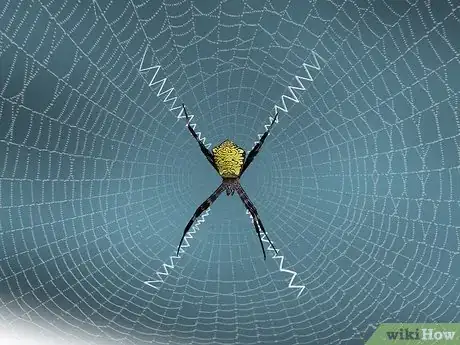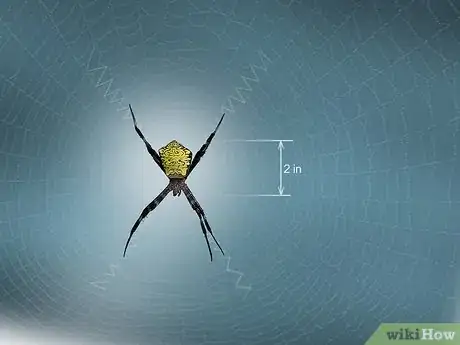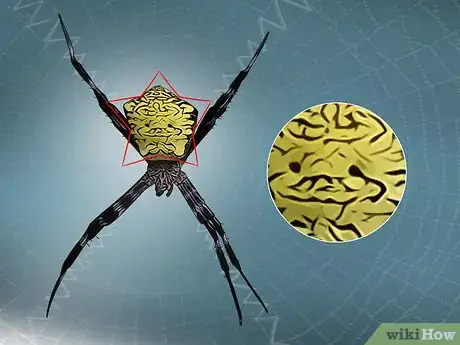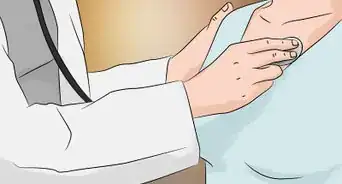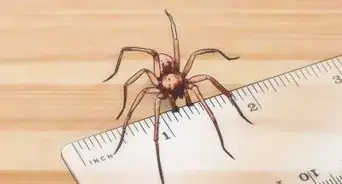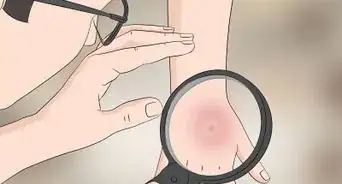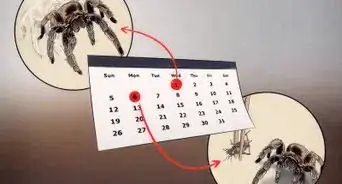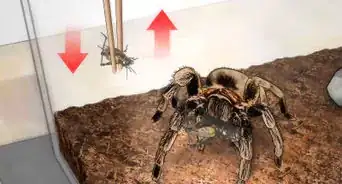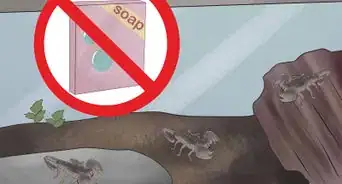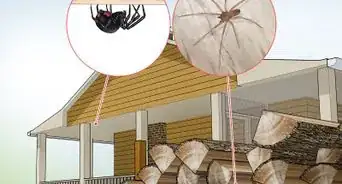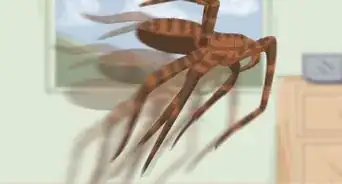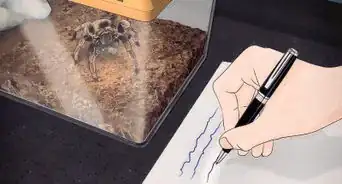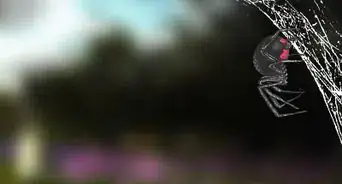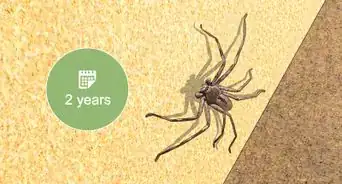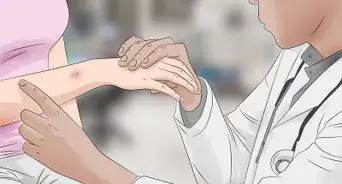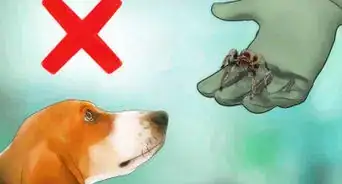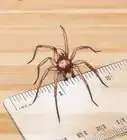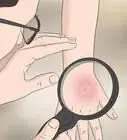This article was co-authored by wikiHow Staff. Our trained team of editors and researchers validate articles for accuracy and comprehensiveness. wikiHow's Content Management Team carefully monitors the work from our editorial staff to ensure that each article is backed by trusted research and meets our high quality standards.
There are 9 references cited in this article, which can be found at the bottom of the page.
wikiHow marks an article as reader-approved once it receives enough positive feedback. In this case, several readers have written to tell us that this article was helpful to them, earning it our reader-approved status.
This article has been viewed 580,667 times.
Learn more...
The name “banana spider” is used to refer to a number of different spiders and spider genera that are found throughout the globe. Many banana spiders are locally called thus because they are colored like bananas or found in banana trees. So depending on where you live in the world, banana spiders could refer to golden orb-weavers, members of the Cupiennius genus, Brazilian wandering spiders, or Hawaiian garden spiders.
Steps
Identifying Golden Orb-Weavers
-
1Note their color. These spiders usually have red, yellow, or white abdomens contrasted against black or dark brown. Their legs are often striped, have feathery tufts, and the tips of their legs point inward.[1]
-
2Know their size. The body of a female golden orb-weaver can be between one-and-a-half and three inches, while males are typically smaller than one inch. Their bodies are longer than they are wide, and they can have a leg span of up to six inches.Advertisement
-
3Recognize notable characteristics. Golden orb-weavers usually have irregular spots on their abdomens.
-
4Recognize their webs. The webs of these spiders can be easily identified because of the yellow or golden color of the silk, which is why they are called golden orb-weavers.[2] The webs can be larger than a yard across, and are generally found at eye level or above, and usually in forested areas or mangroves.[3]
-
5Learn where golden orb-weavers live. Spiders of the Nephila genus are commonly called golden orb-weavers, giant wood spiders, and banana spiders. While these spiders are mildly venomous, they aren’t a big threat to humans, as their venom isn’t overly potent. The species that make up this genus can be found in most places throughout the world, including:
- Australia
- Asia
- Africa and Madagascar
- South America
- North America (in the southern United States)[4]
Identifying the Cupiennius Genus
-
1Learn where Cupiennius spiders live. Cupiennius spiders are called banana spiders because they are sometimes found in banana shipments in North America and Europe. However, they are only native to Mexico, the northwestern parts of South America, and a few Caribbean islands.
- While these spiders are not dangerous to humans, they are often mistaken for the venomous Phoneutria, or Brazilian wandering, spiders.
-
2Know their size. The smallest spider species in this genus are about a quarter-inch, while females of the larger species can be as large and one-and-a-half inches. While often mistaken for Brazilian wandering spiders, Cupiennius spiders are generally smaller.
-
3Note their color and identifying characteristics. Cupiennius spiders may have bright red hairs on their legs or mouths, and may have black spots on a white background on the underside of their legs near the body.[5]
Identifying Brazilian Wandering Spiders
-
1Learn where Brazilian wandering spiders live. Spiders of the Phoneutria genus are commonly known as Brazilian wandering spiders, armed spiders, or banana spiders. They are native to tropical areas in South America, but there has also been one species found living in Central America.[6] Like Cupiennius spiders, Brazilian wandering spiders are often referred to as banana spiders because they sometimes travel the globe in banana shipments.
- Brazilian wandering spiders are a danger to humans, and are known as one of the most venomous spiders on Earth. However, there is anti-venom to treat their bites.[7]
-
2Know their size. Spiders in the Phoneutria genus can have bodies as large as two inches, and leg spans of up to five inches.[8]
-
3Note their color. These spiders tend to be brown and hairy. They are often confused with Cupiennius spiders because they too can have red hairs on their mouths, but they also might have a black spot on their bellies.[9]
-
4Recognize notable characteristics. Brazilian wandering spiders will often sit with their two front legs lifted in the air and sway from side to side.[10]
Identifying Hawaiian Garden Spiders
-
1Learn where Hawaiian garden spiders live. Argiope appensa are commonly known as Hawaiian garden spiders. They are native to Taiwan and Guam, and are now found regularly in Hawaii and New Guinea.[11] They are not venomous, and don’t pose any real threat to humans.
-
2Recognize their webs. Hawaiian garden spiders have distinctive webs, thanks to the unique zigzag pattern they incorporate into their webs with thick bands of silk.[12]
-
3Know their size. These spiders can be quite large, with body lengths reaching over two inches.
-
4Note their color and identifying characteristics. Hawaiian garden spiders are often called banana spiders because of their yellow color. They can also be identified by their unique star-shaped abdomens.[13]
Community Q&A
-
QuestionI found a spider in our garden that had physical characteristics of the orb spider but had the zigzag in the web like the Hawaiian one. Do the golden orb spiders also spin the zig zag?
 Rebecca BaeckerCommunity AnswerYou may have had the writer spider. It looks like a banana spider but has the zigzag in the center.
Rebecca BaeckerCommunity AnswerYou may have had the writer spider. It looks like a banana spider but has the zigzag in the center. -
QuestionApproximately how many babies do banana spiders have?
 Community AnswerSpiders can lay up to one thousand eggs, assuming half don't hatch, they can have approximately 500 babies.
Community AnswerSpiders can lay up to one thousand eggs, assuming half don't hatch, they can have approximately 500 babies. -
QuestionIs the banana spider poisonous?
 Community AnswerYes. However, keep in mind banana spider refers to a group, not a specific type. Most of them are venomous, especially Brazilian wandering spiders.
Community AnswerYes. However, keep in mind banana spider refers to a group, not a specific type. Most of them are venomous, especially Brazilian wandering spiders.
References
- ↑ http://planetsave.com/2013/06/14/banana-spider-golden-silk-orb-weaver-facts-pictures-bite-effects-etc/
- ↑ http://www.inaturalist.org/taxa/49758-Nephila
- ↑ http://www.inaturalist.org/taxa/49758-Nephila
- ↑ http://www.inaturalist.org/taxa/49758-Nephila
- ↑ http://spiders.ucr.edu/banana.html
- ↑ http://www.livescience.com/41591-brazilian-wandering-spiders.html
- ↑ http://www.livescience.com/41591-brazilian-wandering-spiders.html
- ↑ https://animalcorner.co.uk/animals/brazilian-wandering-spider/
- ↑ http://www.livescience.com/41591-brazilian-wandering-spiders.html
- ↑ http://www.spidersworlds.com/brazilian-wandering-spider/
- ↑ http://www.insectidentification.org/insect-description.asp?identification=Hawaiian-Garden-Spider
- ↑ http://ednieuw.home.xs4all.nl/Spiders/ArgiopesUS/Argiopes_USA.html
- ↑ http://www.mauijungalow.com/2011/12/argiope-appensa-spider-with-yellow-star.html#.VfHIEPTU0g4
About This Article
To spot a golden orb-weaver banana spider, which are found in areas like North America and Asia, look for spiders with red, yellow, or white bellies, and a leg span of up to 6 inches. To identify a Cupiennius spider, often seen in Mexico, keep an eye out for small spiders between ¼ inch to 1 ½ inches that have bright red hairs on their legs and mouths. For venomous Brazilian wandering spiders, look for brown, hairy spiders about 5 inches in size, which will sometimes sit with 2 front legs lifted in the air. For more info on banana spiders, like how to spot a Hawaiian garden spider, keep reading!
